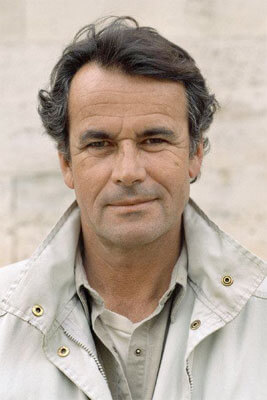Bruno Barbey is a Moroccan-born French photographer. Throughout his four-decade career he has traveled across five continents, photographing many wars.
Barbey was born in Morocco and in 1959-1960 he studied photography and graphic arts at the Ecole des Arts et Métiers in Vevey, Switzerland. During the 1960s he was commissioned to photograph European and African countries by Editions Rencontre in Lausanne. In 1964 Barbey began a relationship with
Magnum Photos, becoming an Associate member in 1966, and a full member in 1968, at which time he was photographing student riots in Paris. He eventually served as Magnum vice president for Europe in 1978 and 1979 and from 1992-1995 as President of Magnum International.
He spent 1979 to 1981 photographing Poland, resulting in his book
Portrait of Poland. He rejects the label of 'war photographer', although he has covered civil wars in Nigeria, Vietnam, the Middle East, Bangladesh, Cambodia, Northern Ireland, Iraq, and Kuwait. From 2005 Barbey has, among other work, been pursuing a project on Istanbul.
Source: Wikipedia
Bruno Barbey was born on Feb. 13, 1941, in Berrechid, Morocco, just south of Casablanca, and grew up in various parts of the country: Rabat, Salé, Marrakesh and Tangiers. His father, Marc, was a diplomat; his mother was Marie Clement-Grandcourt. From a young age he knew he wanted to travel the world like Antoine de Saint-Exupéry, the French writer and aviator.
Bruno’s parents sent him to Paris for high school, where he was a
“dunce and a thwarted lefthander,” he wrote in his retrospective photographic book,
Passages (2015). He and his friends skipped classes to see movies by Italian neorealist filmmakers like
Roberto Rossellini and
Vittorio De Sica.
Mr. Barbey entered Ecole Des Arts et Métiers in Vevey, Switzerland, in 1959 to study photography and graphic arts, but left after a year, because his courses had focused on advertising and industrial photography. He craved the freedom to pursue a single subject for an extended period as the Swiss documentary photographer
Robert Frank did in his groundbreaking book
The Americans, which was published in France in 1958.
Following Frank’s example, Mr. Barbey drove through Italy in a used Volkswagen in the early 1960s, photographing its people in black-and-white in a neorealist style.
“My goal,” he wrote in
Passages,
“was to capture the spirit of the place.” He caught dozens of moments in the life of a nation: a family racing along on a scooter, each person ebullient save for the pregnant mother; a group of girls whose joyful expressions contrast with that of a doleful beggar holding out his hand behind them; little boys playing with realistic-looking weapons; and a host of other characters like prostitutes, priests, old men and Mafiosi.
The photographs - which would later be published as
The Italians in 2002 - brought him to the attention of
Magnum, where he worked for more than 50 years. In addition to the Paris demonstrations, he covered conflicts in the Middle East, Nigeria, Vietnam and Cambodia and recorded life in China, Brazil, India, Japan and Spain.
He spent much of 1981 in Poland during the rise of the Solidarity trade union, capturing Poles in a period of turmoil and torment. He collected the pictures in
Portrait of Poland (1982).
“He brought genteel attention to the human experience — with a lot of kindness,” Gilles Peress, another Magnum photographer, said in a phone interview.
Mr. Barbey, whose photographs have been widely exhibited, received the French National Order of Merit and was elected a member of the French Academy of Fine Arts, Institut de France, in 2016. He served as a Magnum executive at two different times.
In addition to his wife, he is survived by a daughter, Aurélie Barbey; a son, Igor; two sisters, Loïse Barbey-Caussé and Adelaïde Barbey-Guissinger; two brothers, Dominique and Guy; and four grandchildren.
Although he left Morocco at age 12, Mr. Barbey kept returning there, lured by its rich colors, light and architecture. Many of his photographs were of quiet moments: a bride showing off her hands decorated with a henna design; a golden-hued interior with a distant figure in a black-and-white striped robe blending into the floor’s design; red hides drying in the sun; and a person in black walking down a lane bracketed by pink walls.
“Its very difficult to photograph there,” Mr. Barbey was quoted as saying on Magnum’s website,
“because in Islam photography is supposed to bring the evil eye.”
He added:
“You have to be cunning as a fox, well-organized and respect some customs. The photographer must learn to merge into walls. Photos must either be taken swiftly, with all the attendant risks, or only after long periods of infinite patience.”Source: New York Times
